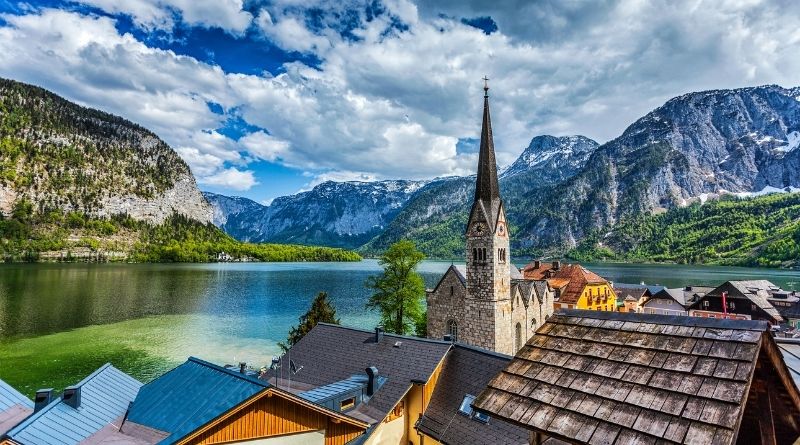Costa Blanca Inland Destinations: A Guide to Serene Villages and Scenic Retreats
As you venture beyond the sun-drenched beaches of Costa Blanca, Spain, an array of sights and experiences await in the region’s inland treasures. The Costa Blanca is not merely a stretch of coastline—it is a diverse canvas painted with the rich hues of culture, history, and breathtaking landscapes that define the heart of Spain. Exploring inland, you will find a tapestry woven from the threads of ancient traditions and modern Spanish life.
The tranquil beauty of the Costa Blanca hinterland offers you an intimate glimpse into life away from the coast. This part of Spain boasts a multitude of picturesque villages, historic municipalities, and untouched natural scenery. Each destination is steeped in history, from castle ruins that stand testament to medieval battles to serene valleys that have nurtured generations with their fertile soils. Adventuring into the mountains reveals panoramic views that underscore the region’s natural allure—a stark contrast to the bustling beaches that might have been your initial introduction to Costa Blanca.
Your exploration of the Costa Blanca’s interior is a journey through a landscape that has been carved out over centuries. From the enduring practices of local artisans to the architectural marvels that punctuate the rolling hills and rugged mountains, the inland destinations of Costa Blanca invite you to immerse yourself in an authentic Spanish experience. The cultural fabric of the region is vibrant and dynamic, ensuring that every step through its varied landscapes is a step through a living history.
Discovering Costa Blanca Inland Destinations
The Costa Blanca’s inland rewards you with a rich tapestry of historical landmarks, serene natural retreats, and the vibrant essence of traditional Spanish life.
Historical Richness and Cultural Insights
As you journey through the inland of Costa Blanca, a plethora of historical sites awaits. Castles like Guadalest offer a glimpse into a past shaped by Moors, Phoenicians, and Romans. Engage with the region’s stories in numerous museums that celebrate its varied traditions. Alicante, retaining its historical charm, features remnants of old civilisations, enhancing your cultural experience.
Natural Escapes and Leisure Activities
In contrast to the sun-soaked beaches, the inland mountains of Sierra de Bernia and the hiking trails around Fonts de l’Algar provide nature lovers with an idyllic escape. For enthusiasts of leisure, well-maintained golf courses dot the landscape. Parks and nature reserves showcase majestic viewpoints, perfect for capturing the beauty of locations such as Calpe, Altea, and Denia.
Authentic Towns and Gastronomy
Amble along the cobbled streets of Moraira’s old town and indulge in the authentic tastes of Spain at traditional tapas bars. In Javea and other towns, restaurants serve fresh, local cuisine that reflects the region’s rich gastronomic heritage. For those who relish shopping, the charming boutiques nestled within these towns offer an array of unique items to commemorate your travels.
Practical Information for Travellers
When venturing to the Costa Blanca’s inland destinations, it is essential to plan your accommodation and understand the best times for travel along with transportation options.
Accommodations and Logistics
Hotels and Resorts: You’ll find a range of accommodation options catering to different budgets. Many hotels are situated near tourist attractions and along the promenade, offering easy access to key sights.
- Reservations: Booking in advance is especially advisable for the peak summer months of July and August.
- Rural Stays: For a more secluded retreat, consider staying in smaller inns or guesthouses in the mountainous regions inland.
Transportation:
- Alicante Airport: The main gateway to Costa Blanca is via Alicante Airport, which serves a multitude of international flights.
- Rented Car: Having a rented car at your disposal is advantageous for exploring the less accessible areas at your own pace.
- Public Transport: Bus services are available, but schedules may be infrequent, particularly in rural areas.
Best Time to Visit and Transportation
Weather and Climate:
- Best Months: The ideal times to visit are July, August, and September, when the weather is at its finest – warm temperatures and minimal rainfall.
- Climate Details: The climate in summer can be quite hot, so ensure you are prepared for high temperatures.
Getting Around:
- By Bus: Local buses can facilitate travel between major destinations, but may be less reliable for remote areas.
- By Plane: Domestic flights are an option if you’re coming from other parts of Spain.
- Road Tripping: Driving provides a sense of adventure and allows you to discover the landscape’s beauty at your leisure.




